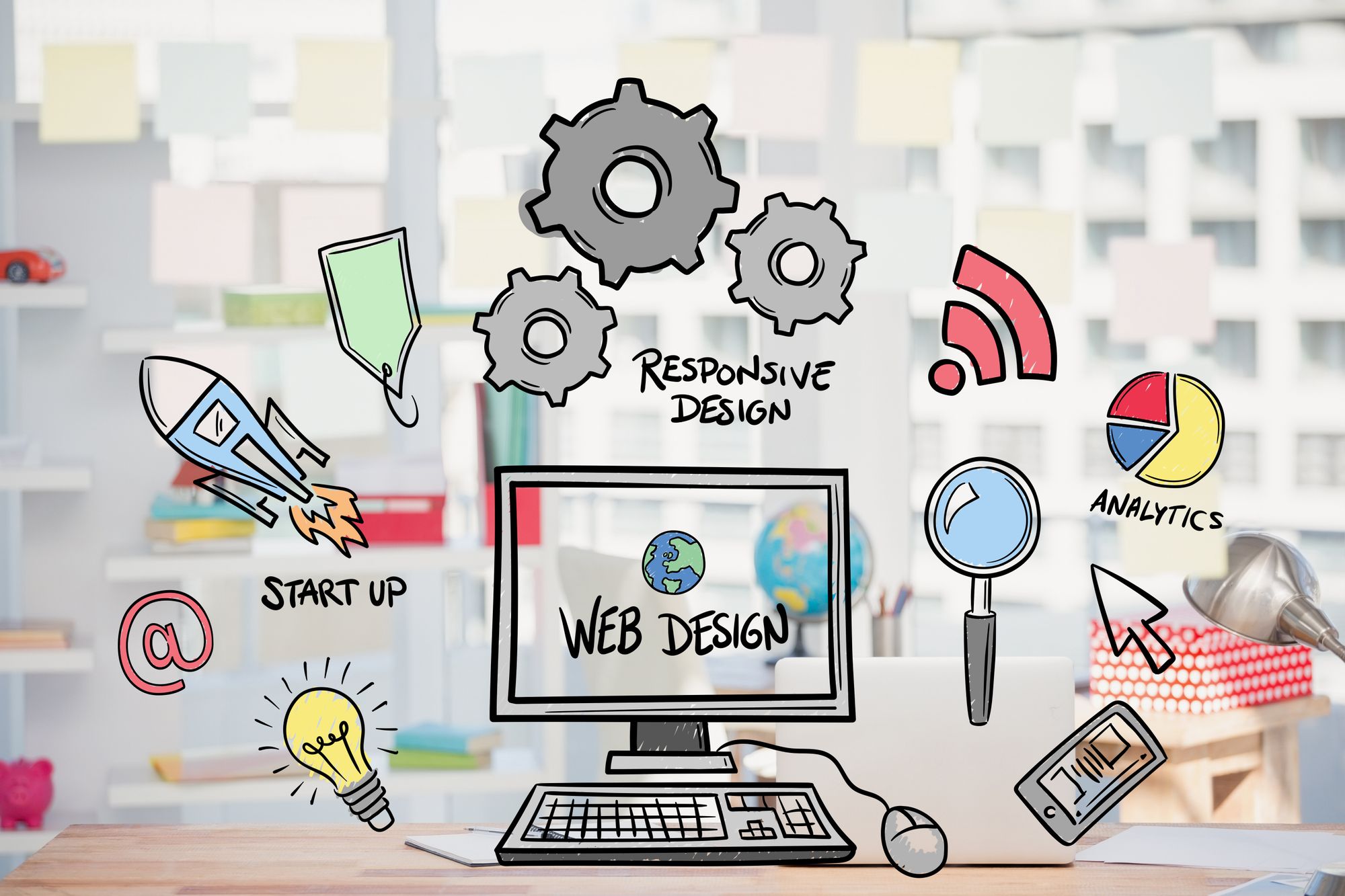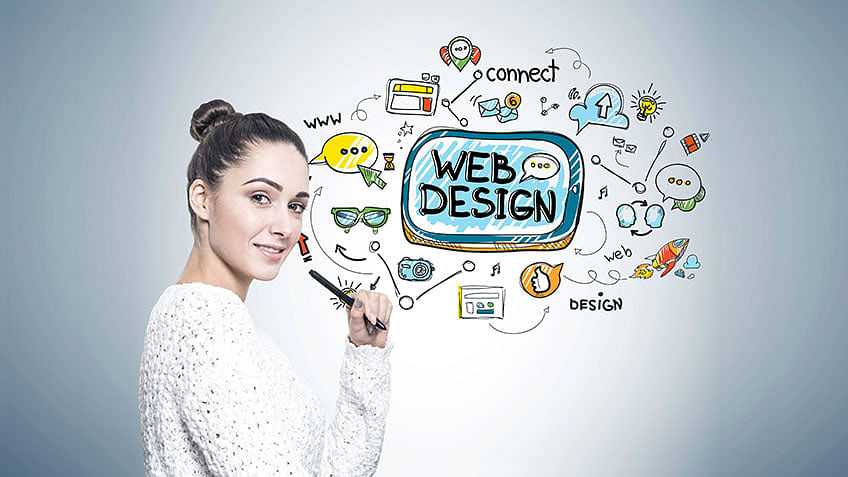Discovering Various Types of Website Design to Boost User Experience
In the ever-evolving digital landscape, the exploration of diverse internet design approaches is vital for boosting customer experience. From receptive frameworks that adjust flawlessly throughout gadgets to minimal styles that focus on simpleness and clearness, the options made in website design can profoundly affect usability and interaction. Incorporating interactive aspects additional enhances the customer journey, making sites much more vibrant and interesting. Nevertheless, exactly how do these techniques jointly contribute to a user-centric electronic atmosphere that not just captivates but likewise preserves users? The answer might hinge on the nuanced equilibrium between aesthetic charm and practical access.
Responsive Website Design
In an age where digital usage transcends multiple tools, receptive internet style has actually come to be a cornerstone of reliable user experience. The universality of smartphones, tablet computers, and differing screen dimensions requires web sites that adapt seamlessly to any kind of display. Receptive website design (RWD) uses adaptable designs, fluid grids, and media questions to guarantee that website render effectively, providing optimum use across devices. This versatility not only boosts visual appeal however also improves ease of access and navigation, important for retaining individual involvement.
The execution of RWD begins with a mobile-first approach, focusing on the smallest screen dimension to ensure functionality and aesthetic comprehensibility. By utilizing CSS media inquiries, developers can customize the website's appearance based upon the features of each gadget. This makes certain that photos scale correctly, text continues to be understandable, and interactive components are easily obtainable, consequently lowering the demand for too much scrolling or resizing.
Moreover, receptive style adds to boosted search engine optimization (SEARCH ENGINE OPTIMIZATION) by supplying a regular user experience and minimizing bounce prices. Internet search engine prefer mobile-friendly websites, making responsiveness an essential element of digital strategy. In significance, responsive web design is important for accommodating diverse customer interactions, fostering a inclusive and interesting online visibility.
Minimalist Style Approaches
Minimalist layout's appeal depends on its capacity to boil down complicated information right into its most crucial aspects, creating a minimalist and user-friendly individual experience. By prioritizing simplicity, minimal style gets rid of peripheral details, allowing individuals to focus on core web content and capability. This strategy is defined by ample white area, clean lines, and a restricted color scheme, all of which add to a visually pleasing and effective user interface.

In addition, minimal layout supports faster filling times, as less visual aspects and reduced material intricacy can lower the amount of information needed to render a webpage. This performance not just boosts customer satisfaction however likewise adds to far better seo (SEARCH ENGINE OPTIMIZATION) rankings. Minimal style is not just a stylistic selection but a strategic method that can substantially influence user involvement and conversion prices.
Interactive and Dynamic Aspects
Vibrant and interactive aspects are critical in enhancing customer involvement and creating memorable web experiences. These components include computer animations, float results, sliders, and real-time updates, which not only capture individuals' focus but also facilitate smooth navigation. By integrating these features, developers can transform fixed pages into interesting digital settings that motivate interaction and exploration.
Animations, as an example, can lead customers through complex information without frustrating them, while hover impacts give prompt feedback, enhancing the customer's understanding of clickable locations. Web Design Gauteng. Additionally, sliders enable customers to see content at their own speed, and real-time updates make sure that details offered is pertinent and present, preserving the customer's rate of interest

User-Centric Layout Techniques
A foundation of efficient web layout is the implementation of user-centric layout approaches, which focus on the demands and preferences of the end user above all else. By concentrating on the individual, developers can develop intuitive, accessible, and interesting experiences that boost fulfillment and drive interaction. User-centric layout involves complete study to recognize the target audience's objectives, challenges, and habits. This research study is important for establishing personalities and situations that direct style decisions, ensuring the final product resonates with customers.
One essential approach is functionality screening, which involves observing actual users as they engage with the design. This process recognizes pain factors and areas for enhancement, permitting designers to fine-tune the user interface iteratively. Incorporating responses loops and dexterous methodologies even more guarantees the style progresses abreast with user expectations.
Additionally, ease of access is a crucial element of user-centric layout. Making sure that digital systems come to all customers, consisting of those with disabilities, enhances inclusivity and expands the possible individual base. This can be attained via Continue conformity with Internet Content Accessibility Guidelines (WCAG) and the thoughtful application of style principles like readability, comparison, and navigation.
Ultimately, effective user-centric style promotes a smooth connection between the customer and the digital environment, raising general customer experience.
Implementing Most Current Style Fads
In the realm of internet style, remaining abreast of the latest design fads is important for creating site web useful and aesthetically engaging interfaces that astound users. Minimal design, characterized by tidy lines and ample white area, permits individuals to concentrate on material without unnecessary interruptions.

Moreover, integrating the most recent typography fads, such as variable fonts, provides versatility and flexibility throughout various gadgets and screen sizes, making certain uniformity in user experience. Finally, dark mode styles have gained appeal as a result of their aesthetic appeal and energy efficiency on OLED screens. By tactically implementing these trends, internet developers can create straightforward and ingenious websites that resonate with contemporary audiences.
Verdict
A thorough expedition of numerous web style approaches is important for improving customer experience. By integrating responsive style, minimalist techniques, and interactive aspects, web sites can ensure optimal functionality and aesthetic allure throughout varied gadgets. Stressing user-centric methods guarantees ease of access and interaction, while incorporating the most recent layout patterns fosters a captivating on-line setting. Inevitably, a balanced and educated technique to web design substantially enhances individual complete satisfaction and interaction, causing enhanced overall web site efficiency and success.
In the ever-evolving electronic landscape, the expedition of diverse web layout techniques is vital for boosting individual experience.A keystone of effective internet style is the implementation of user-centric layout methods, which prioritize the demands and choices of the end customer above all else. Ensuring that digital systems are obtainable to all customers, consisting of those with disabilities, enhances inclusivity and widens the prospective user base.In the world of internet layout, staying abreast of the most recent layout trends is important for producing functional and aesthetically compelling interfaces that astound individuals (Web Design Gauteng).A comprehensive expedition of different internet style approaches is essential for boosting individual experience